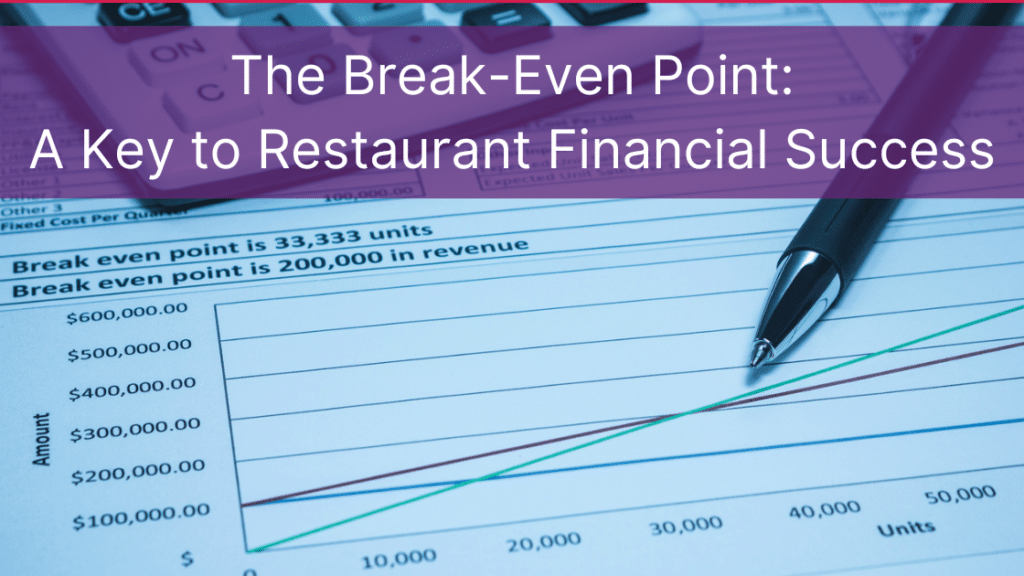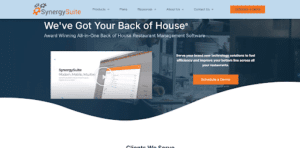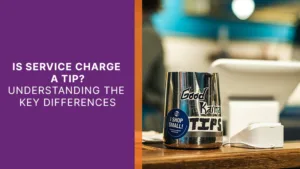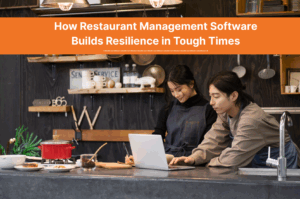Updated on: January 3, 2024
Running a restaurant is a dream for many, but it’s also a business fraught with challenges. From fluctuating food costs to ever-changing customer preferences, the restaurant industry is known for its volatility. To navigate this complex landscape successfully, restaurant owners need to be savvy not only in the culinary arts but also in financial management. One fundamental financial concept that can make or break a restaurant’s bottom line is the “Break-Even Point.”
What is the Break-Even Point?
The term “Break-Even Point” may sound intimidating, but at its core, it’s a simple and crucial concept for any business, especially restaurants. Essentially, the break-even point is the point at which your restaurant’s total revenue equals its total expenses. In simpler terms, it’s the point where you’re neither making a profit nor incurring a loss.
Imagine this scenario: You’ve just opened your restaurant, invested in the best ingredients, hired skilled chefs, and designed an inviting ambiance. However, you’re still uncertain about how many customers you need to serve each day to cover your costs and start turning a profit. That’s where the break-even point comes in.
Let’s break it down further. Your restaurant’s expenses consist of two main components: fixed costs and variable costs. Fixed costs include things like rent, insurance, and salaries, which remain relatively constant regardless of your sales volume. Variable costs, on the other hand, fluctuate with your sales and include expenses like food and beverage costs (cost of goods sold, or COGS), utilities, and marketing expenses.
The break-even point tells you how many dishes or meals you need to sell to cover both fixed and variable costs. Once you reach this point, every sale beyond it contributes to your restaurant’s profit. Understanding this critical number can help you make informed decisions about pricing, menu offerings, and cost control, ultimately leading to the financial success of your restaurant.
Why is the Break-Even Point Important for Restaurants?
In the world of restaurant ownership, staying afloat and achieving profitability can be a daunting task. The restaurant industry is characterized by its unique set of challenges, such as intense competition, changing consumer tastes, and unpredictable external factors (hello, global pandemics). This is where the concept of the break-even point proves its worth, as it plays a pivotal role in the financial stability and growth of your restaurant. Let’s explore why understanding the break-even point is essential for restaurants.
Risk Mitigation
Restaurants face inherent risks, and not all months or seasons are created equal. There are busy periods and slow ones, and it’s not uncommon to experience sudden dips in sales. By knowing your break-even point, you can assess your financial health even during challenging times. It acts as a financial safety net, helping you make informed decisions about cost-cutting or marketing strategies to weather downturns.
Informed Pricing Strategies
Setting the right prices for your menu items can be a delicate balancing act. If prices are too low, you might not cover your costs; if they’re too high, you risk deterring customers. The break-even point provides a clear reference point for pricing decisions. You’ll know how much you need to charge to cover expenses and, eventually, make a profit.
Investment Planning
Whether you’re seeking additional funding or considering expanding your restaurant, investors and lenders will want to know if your business is financially viable. Demonstrating that you understand your break-even point not only instills confidence in stakeholders but also helps you secure the necessary capital for growth.
Goal Setting and Benchmarking
To drive your restaurant toward success, you need specific goals and metrics to measure progress. The break-even point serves as a tangible goalpost. You can set targets to consistently surpass this point, indicating not just financial sustainability but increasing profitability over time.
Strategic Decision-Making
From menu enhancements to marketing campaigns, you’ll face numerous decisions that can impact your restaurant’s financial health. By being aware of your break-even point, you can assess the potential financial implications of these choices. Should you introduce a new, higher-margin dish? Can you afford a remodel or expansion? These decisions become more straightforward when you understand how they affect your break-even point.
Calculating the Break-Even Point
Now that we’ve established why the break-even point is essential for your restaurant, it’s time to roll up our sleeves and delve into the nuts and bolts of calculating it accurately. Don’t worry; you don’t need to be a financial wizard to grasp this concept. We’ll break it down into manageable steps, so you can confidently determine your restaurant’s break-even point.
Step 1: Understand Your Fixed Costs
Fixed costs are the expenses that remain relatively constant regardless of your restaurant’s sales volume. These are essential overhead expenses that you must cover, regardless of how many customers walk through your doors. Common fixed costs in the restaurant industry include:
- Rent: Your monthly lease or rental payments for your restaurant space.
- Salaries and Wages: The salaries of your staff, including chefs, servers, and managerial roles.
- Insurance: Costs for property and liability insurance to protect your business.
- Utilities: Regular bills for electricity, water, and gas.
- Loan Repayments: If you have borrowed money to start or expand your restaurant, include monthly loan repayments.
Make a list of all your fixed costs and tally up the total. This figure represents the minimum amount of revenue your restaurant needs to generate just to cover these essential expenses.
Step 2: Determine Your Variable Costs
Variable costs are expenses that fluctuate with your restaurant’s sales. These include the costs directly associated with producing and serving food and beverages, as well as marketing expenses. Common variable costs in the restaurant industry include:
- Food and Beverage Costs: The cost of ingredients, beverages, and any raw materials required for your menu items.
- Labor Costs: Additional wages and payroll expenses associated with increased customer demand.
- Marketing Expenses: Costs for advertising, promotions, and marketing campaigns.
To determine your total variable costs, you’ll need to calculate the average variable cost per meal. Divide your monthly variable costs by the number of meals served in that month.
A Note About Fixed and Variable Costs: Mixed Costs
You’ll notice that some of the costs listed under the fixed costs and variable costs aren’t always totally fixed or variable. Costs that remain relatively constant, but can fluctuate a little bit, can be classified as “mixed costs”. For instance, your utilities generally stay about the same, but fluctuate a little bit from month to month. If your restaurants are running at full capacity, then your wage expenses might stay close to the same, with some difference based on the number of days in a month, or the difference in wages you might pay individual employees.
Generally, mixed costs are usually grouped into the “fixed cost” category, unless the cost specifically contributes to bringing more guests in the door, and can be measured. For instance, marketing costs can be grouped into variable costs, but only if you actually know how much of that marketing cost actually contributes to bringing a new customer in the door. If you can’t measure that with some accuracy, it might be best to group it with the fixed costs, especially if your marketing budget stays about the same each time period.
Step 3: Calculate the Contribution Margin and Ratio
The contribution margin is a crucial metric in break-even analysis. It represents the portion of each sale that contributes to covering your fixed costs and ultimately, profit. To calculate the contribution margin, use this formula:
Contribution Margin = Average Revenue Per Guest – Average Variable Cost per Guest
Now, it might be difficult to know right away what these average metrics are, so a more simplified approach to calculating the contribution margin is to take the total sales over a specific time period, and subtract the total variable costs over that same time period:
Contribution Margin = Total Sales – Total Variable Costs
Then, in order to find the average contribution margin for each guest, you would divide the contribution margin by the total sales to calculate the contribution margin ratio:
Contribution Margin Ratio = Contribution Margin / Total Sales
You can then use this ratio in your calculation for your break-even point.
Now that you understand these three critical components—fixed costs, variable costs, and contribution margin—calculating your restaurant’s break-even point becomes straightforward.
Step 4: Calculate the Break-Even Point
The break-even point, in terms of the number of guests needed to “break even”, is calculated like this:
Break-even point = Total Fixed Costs / ( Average Revenue Per Guest – Average Variable Cost per Guest )
Or, if you substitute the contribution margin ratio:
Break-even point = Total Fixed Costs / Contribution Margin Ratio
The break-even point here would be the number of guests you would have to serve in order to cover all of your fixed costs and variable costs. If you serve fewer customers than this number, your restaurant would be running at a loss. If you serve more customers, each guest would contribute to your profits.
Interpreting the Break-Even Point
You’ve successfully navigated the intricacies of calculating your restaurant’s break-even point, but what exactly does this numerical milestone mean for your business? In this section, we’ll explore the significance of reaching the break-even point and how it impacts the financial health and decision-making process of your restaurant.
Financial Sustainability
When your restaurant achieves its break-even point, it signals a level of financial sustainability. At this juncture, you’re neither making a profit nor incurring a loss. You’re essentially covering all your costs, both fixed and variable, with your sales revenue. This is a crucial milestone that many restaurants strive to reach, as it provides a foundation for future profitability.
Crossing the Threshold to Profit
Beyond the break-even point, every additional sale contributes directly to your restaurant’s profit. Your fixed costs are covered, and your variable costs are accounted for with each dish or meal you serve. This means that the more you surpass the break-even point, the more profit you generate. It’s the gateway to financial success.
Managing Risk and Uncertainty
In the restaurant industry, where external factors like seasonality and unforeseen events can impact business, reaching the break-even point offers a measure of financial security. During challenging periods, knowing that your restaurant can at least cover its costs provides peace of mind. It allows you to weather downturns and strategically plan for the future.
Decision-Making Confidence
Armed with the knowledge of your break-even point, you can make informed decisions about pricing, menu changes, and cost control. For example, if you want to introduce a new, higher-cost menu item, you can calculate how many additional units you need to sell to maintain or improve your profitability. This data-driven decision-making sets you up for long-term success.
Monitoring Growth
As your restaurant grows, so does your break-even point. This can be both a challenge and an opportunity. It means that you’ll need to continually strive to increase sales and control costs to maintain profitability. However, it also means that you’re on the path to expanding your business and increasing your bottom line.
The break-even point is a pivotal financial metric that every restaurant owner should understand and leverage to their advantage. It’s not just a number; it’s a strategic tool that guides your financial decisions, supports financial sustainability, and serves as a stepping stone to profitability.
Factors Affecting the Break-Even Point in Restaurants
Understanding the break-even point in your restaurant is crucial, but it’s not a static number. Several dynamic factors can influence and shape this pivotal metric. In this section, we’ll delve into these factors, how they impact your break-even point, and strategies for managing them effectively.
Menu Pricing Strategies
Your menu is at the heart of your restaurant’s revenue stream, and how you price your dishes can significantly affect your break-even point. Consider these pricing strategies:
- Cost-Plus Pricing: This approach involves adding a markup to your menu items based on their cost. While it’s straightforward, it may not always reflect what customers are willing to pay.
- Value-Based Pricing: In this strategy, you consider the perceived value of your dishes to customers. It allows you to set higher prices for premium items and lower prices for more basic options.
- Dynamic Pricing: Adjust your menu prices based on demand, time of day, or season. This can help maximize revenue and reach your break-even point faster during peak periods.
Cost Control
Controlling costs is essential for managing your restaurant’s break-even point. Focus on reducing both fixed and variable costs:
- Food Cost Control: Monitor your food inventory, reduce waste, negotiate with suppliers, and consider menu engineering to highlight high-margin items.
- Labor Efficiency: Schedule staff efficiently, cross-train employees, and implement technology to streamline operations.
- Energy and Utilities: Invest in energy-efficient equipment and practices to lower utility costs.
Increasing Sales Volume
One of the most effective ways to reach your break-even point faster is by increasing your restaurant’s sales volume. Here are some strategies to consider:
- Marketing and Promotion: Develop marketing campaigns, loyalty programs, and special promotions to attract new customers and retain existing ones.
- Optimized Menu: Regularly update your menu to feature seasonal items, limited-time offers, or customer favorites.
- Enhanced Customer Experience: Invest in exceptional service, ambiance, and overall dining experience to encourage repeat business and positive word-of-mouth.
- Online Ordering and Delivery: Expand your reach by offering online ordering and delivery services, tapping into the growing demand for convenience.
By actively managing these factors, you can influence your break-even point positively and increase the financial stability and profitability of your restaurant.
Tracking and Adjusting Your Break-Even Point
As a restaurant owner, you’re well aware that the hospitality industry is dynamic and constantly evolving. Therefore, it’s essential not only to calculate your break-even point but also to regularly monitor and adjust it to reflect changing circumstances. In this section, we’ll explore practical steps to track and adapt your break-even point effectively.
Using Restaurant Accounting Software
Modern technology offers powerful tools to streamline your financial management and track your break-even point. Consider implementing restaurant accounting software, which can provide several benefits:
- Accurate Financial Data: Restaurant-specific software can help you maintain up-to-date financial records, making it easier to calculate and track your break-even point.
- Budgeting and Forecasting: Many software solutions offer budgeting and forecasting features, allowing you to plan for various scenarios and adjust your break-even point accordingly.
- Automated Reporting: Streamline your financial reporting with automated features, ensuring you have access to critical data when you need it.
- Integration: Look for software that can integrate with your point-of-sale (POS) system, payroll, and other relevant tools to provide a comprehensive view of your finances.
Periodic Financial Analysis
Regular financial analysis is essential to ensure your restaurant’s break-even point remains accurate and relevant. Here’s how you can perform it:
- Monthly Reviews: Conduct monthly financial reviews to assess your restaurant’s performance. Compare actual revenue and costs to your break-even calculations.
- Variance Analysis: Identify any significant discrepancies between your projections and actual results. Investigate the reasons behind these variances and adjust your break-even point accordingly.
- Scenario Planning: Consider different scenarios and their potential impact on your break-even point. For example, what happens if a key ingredient’s price suddenly increases, or if you decide to expand your menu?
- Benchmarking: Compare your restaurant’s break-even point and financial performance to industry benchmarks and competitors. This can provide valuable insights and help you set realistic goals.
Revising Strategies
Based on your financial analysis and the changing landscape of the restaurant industry, be prepared to revise your strategies. Consider the following:
- Menu Adjustments: If certain menu items consistently underperform, it may be time to replace them with more profitable options.
- Marketing Tweaks: Analyze the effectiveness of your marketing campaigns and adjust them to reach your target audience more effectively.
- Cost Reduction Measures: Continuously look for opportunities to reduce costs without compromising quality or service.
- Pricing Updates: Regularly review your menu prices to ensure they align with your break-even calculations and customer expectations.
Tracking and adjusting your restaurant’s break-even point is an ongoing process. By using technology, conducting regular financial analysis, and being open to revising your strategies, you can adapt to changing circumstances and ensure that your restaurant not only reaches its break-even point but also continues to thrive in the competitive restaurant industry. As you apply these principles, you’ll be better equipped to make data-driven decisions that lead to financial success.
Remember, reaching and exceeding your break-even point is an ongoing process, and it’s a journey that can lead to financial stability, profitability, and long-term success in the competitive world of restaurants.
Stay on Top of Your Restaurant Analytics with SynergySuite
Being able to readily stay on top of your data, and make informed decisions based on that data, it’s absolutely critical to have implemented a quality restaurant reporting and analytics platform like SynergySuite.
Many of the problems and challenges of running a restaurant can be solved or avoided with the right restaurant reporting tools. We offer restaurant analytics software that captures and presents your data in an easy-to-understand dashboard. We make it simple to use your valuable data to save time, improve profitability, and ensure compliance with regulations.
Schedule a demo today to see how SynergySuite can help you take your restaurant business to the next level.






